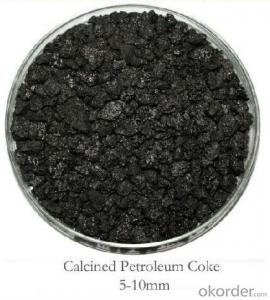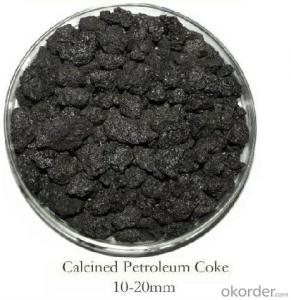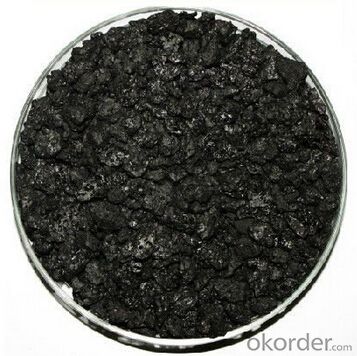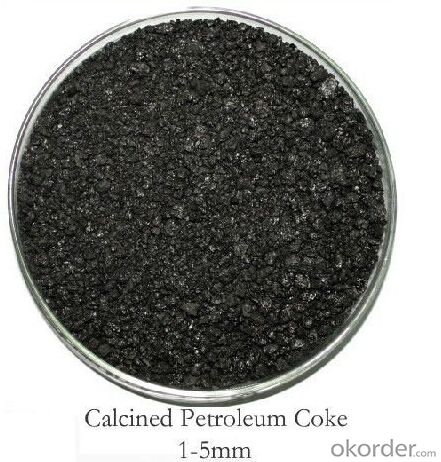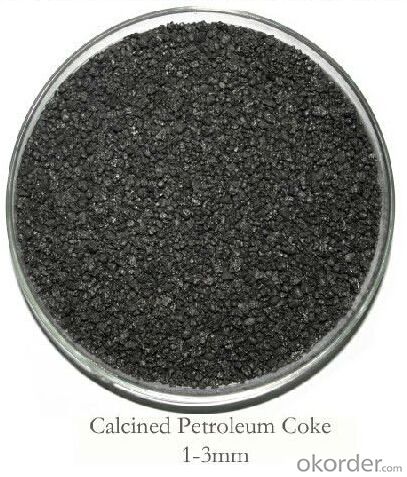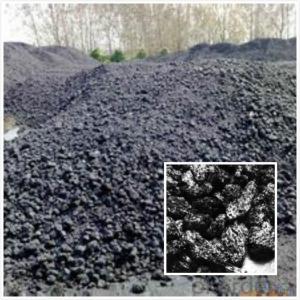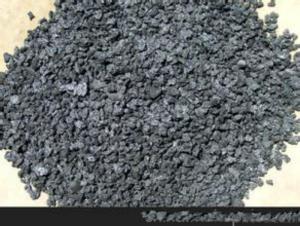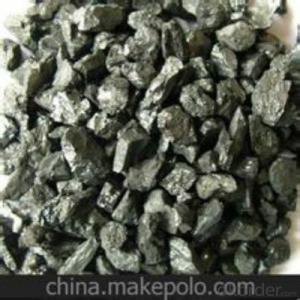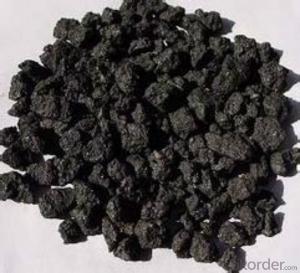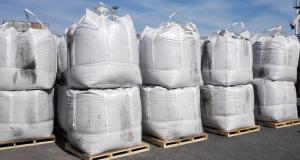Calcined Petroleum Coke Carbon Additive 5-10mm
- Loading Port:
- Qingdao
- Payment Terms:
- TT OR LC
- Min Order Qty:
- 10 m.t
- Supply Capability:
- 500000 m.t/month
OKorder Service Pledge
OKorder Financial Service
You Might Also Like
Specification of Calcined Petroleum Coke:
Calcined Petroleum Coke comes from delayed coke which extracted from oil refinery. Although Calcined Petroleum Coke contains a little bit higher level of sulfur and nitrogen than pitch coke, the price advantage still makes it widely used during steel-making and founding as a kind of carbon additive/carburant
petroleum coke price is lower than graphite pet coke. It is widely used by most foundry plants.
Our product has follwing advantages:
The morphology, chemistry and crystallinity of recarburizer have a major impact on the overall casting cost. The combined application and cost benefits, enable foundries to manufacture castings in a highly cost effective manner.
Reduces:
- Recarburiser consumption
- Power consumption
- Inoculant consumption
- MgFeSi consumption
- Furnace refractory wear
- Scrap rate
- Tap to tap time
- Slag inclusions risk
- Chill
Increases:
- Casting microstructure
- Productivity
- Process consistency
Carbon Recovery:
Compared with calcined petroleum coke, acetylene coke and
graphite electrode scrap, our yields the highest carbon
recovery and fastest dissolution time
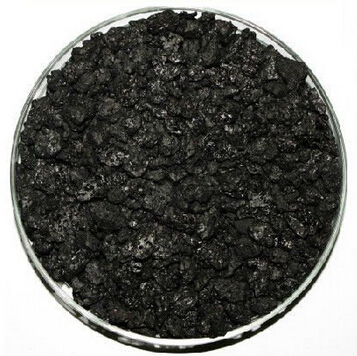

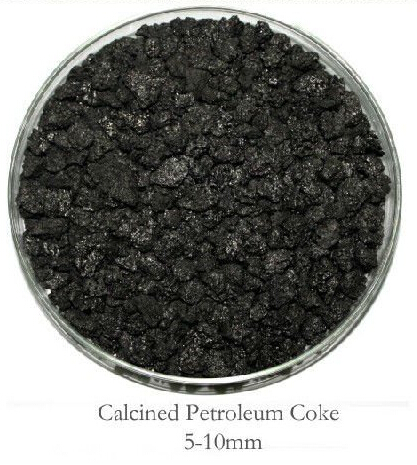
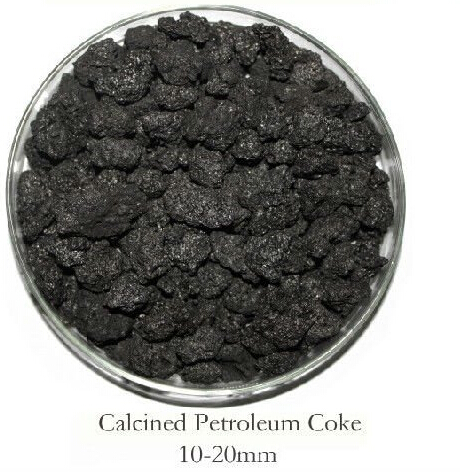
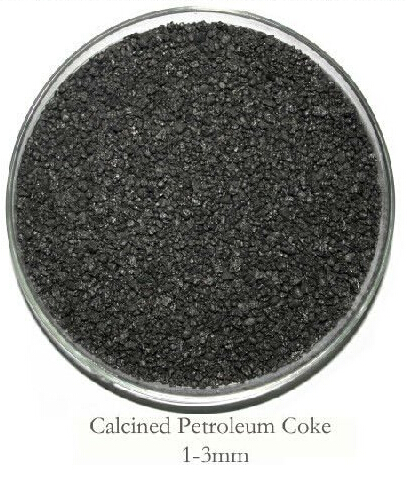
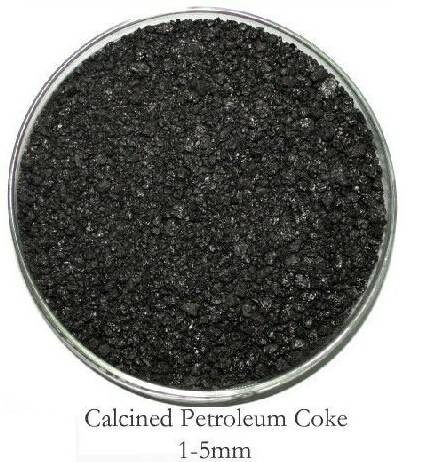
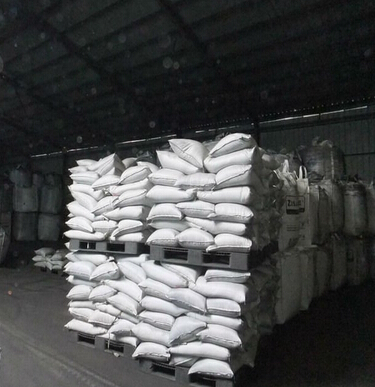
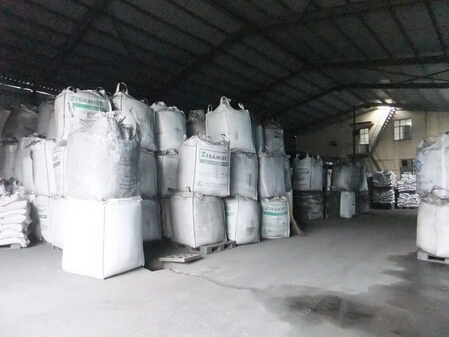
- Q: How is carbon used in the production of diamonds?
- Carbon is a key component in the production of diamonds as it is the primary element that makes up the structure of a diamond. Diamonds are formed deep within the Earth's mantle, where extreme heat and pressure cause carbon atoms to bond together in a unique crystal lattice formation. This process, known as carbon crystallization, occurs over millions of years. One method of producing synthetic diamonds involves recreating these intense conditions in a laboratory. High-pressure, high-temperature (HPHT) machines are used to apply immense pressure and heat to a small piece of carbon, such as graphite. This stimulates the natural process that occurs in the Earth's mantle, allowing the carbon atoms to rearrange themselves and form a diamond. Another method, known as chemical vapor deposition (CVD), involves the use of a hydrocarbon gas, such as methane, in a controlled environment. The gas is introduced into a chamber and heated, causing the carbon atoms to separate from the hydrogen atoms. These carbon atoms then settle on a substrate, such as a diamond seed, and gradually build up layer by layer, forming a diamond. In both methods, carbon serves as the building block for the diamond's structure. By manipulating the conditions in which carbon atoms are subjected to extreme heat and pressure, scientists and manufacturers can control the growth and formation of diamonds. This allows for the production of synthetic diamonds that possess the same physical and chemical properties as natural diamonds. Overall, carbon is essential in the production of diamonds as it is the fundamental element that enables the formation and growth of these precious gemstones.
- Q: What are the potential uses of carbon nanomaterials in medicine?
- Carbon nanomaterials have immense potential in medicine due to their unique properties. They can be used for targeted drug delivery, imaging, tissue engineering, and diagnostics. Carbon nanotubes, for example, can transport drugs directly to cancer cells, reducing side effects. Additionally, carbon nanomaterials can provide high-resolution imaging of tissues and organs, aiding in early disease detection. Furthermore, they can be used to create scaffolds for tissue regeneration, promoting the growth of new cells and tissues. Overall, carbon nanomaterials hold great promise for revolutionizing medicine and improving patient outcomes.
- Q: How does carbon affect water quality?
- Carbon can affect water quality by altering its pH level and reducing its oxygen content. Additionally, carbon can react with other chemicals present in water to form harmful compounds, compromising its overall quality and making it unsuitable for consumption and aquatic life.
- Q: What are the impacts of carbon emissions on the spread of infectious diseases?
- Carbon emissions have a significant impact on the spread of infectious diseases. The burning of fossil fuels, such as coal, oil, and natural gas, releases large amounts of carbon dioxide (CO2) and other greenhouse gases into the atmosphere. These emissions contribute to climate change, which in turn affects the distribution and transmission of various infectious diseases. One of the main ways carbon emissions influence the spread of infectious diseases is through changes in temperature. Rising global temperatures create favorable conditions for the survival and proliferation of disease-causing agents and their vectors. For example, warmer temperatures can expand the geographic range of disease-carrying insects like mosquitoes, which are responsible for transmitting diseases such as malaria, dengue fever, and Zika virus. Additionally, climate change caused by carbon emissions can disrupt ecosystems and alter the behavior of animals that serve as hosts or reservoirs for infectious diseases. Changes in migration patterns, breeding cycles, and hibernation can affect the dynamics of diseases, making them more difficult to control. For instance, warmer temperatures may lead to the expansion of tick populations, increasing the risk of tick-borne diseases like Lyme disease. Furthermore, carbon emissions contribute to air pollution, which has adverse effects on respiratory health. Pollutants like particulate matter and nitrogen dioxide can weaken the immune system and make individuals more susceptible to respiratory infections, including influenza and pneumonia. These pollutants also exacerbate the severity of respiratory symptoms in individuals already infected with respiratory diseases. The impacts of carbon emissions on the spread of infectious diseases are not limited to direct effects on humans. Changes in climate patterns can disrupt agricultural systems, leading to food insecurity and malnutrition. These conditions weaken the immune systems of vulnerable populations, making them more susceptible to infectious diseases. It is important to recognize the connection between carbon emissions and the spread of infectious diseases in order to mitigate their impacts. Reducing carbon emissions through transitioning to cleaner energy sources and implementing sustainable practices can help mitigate climate change and limit the expansion of disease vectors. Additionally, investing in public health infrastructure and surveillance systems can enhance our ability to detect and respond to outbreaks, minimizing their spread and impact on human populations.
- Q: How does carbon affect the formation of earthquakes?
- The formation of earthquakes is not directly influenced by carbon. The primary cause of earthquakes is the movement of tectonic plates, which are large sections of the Earth's crust that float on a semi-fluid layer underneath. These plates can collide, slide past each other, or move apart, resulting in stress building up along the boundaries between the plates. When this stress becomes too great, it is released as an earthquake. Nevertheless, carbon can indirectly impact the occurrence of earthquakes through its role in the Earth's carbon cycle and its contribution to climate change. Carbon dioxide (CO2) is a greenhouse gas, which is released into the atmosphere through various human activities, including the burning of fossil fuels. This excess CO2 in the atmosphere leads to global warming and climate change. Climate change can have several effects on the Earth's crust, some of which may indirectly influence seismic activity. For instance, global warming can cause the melting of glaciers and polar ice caps, resulting in changes in the distribution of mass on the Earth's surface. This redistribution of mass can cause adjustments in the Earth's crust, leading to increased stress along fault lines and potentially triggering earthquakes. Furthermore, climate change can affect groundwater levels and pore pressure within rocks through changes in precipitation patterns and the hydrological cycle. These alterations in water content can modify the strength and stability of fault lines, making them potentially more susceptible to slipping and causing earthquakes. It is crucial to note that the direct impact of carbon on earthquake formation is minimal compared to primary factors like plate tectonics. However, scientists are conducting ongoing research and investigations to understand the relationship between carbon emissions, climate change, and seismic activity.
- Q: How is carbon used in the steel industry?
- Carbon is used in the steel industry as an essential element for the production of steel. It is added to iron during the steelmaking process to increase the strength and hardness of the final product. By controlling the carbon content, different types of steel with varying properties can be produced, such as high carbon steel for tools or low carbon steel for structural applications.
- Q: How does carbon dioxide affect the growth of marine organisms?
- Marine organisms are impacted by carbon dioxide in various ways. To begin with, the ocean's pH can be lowered by increased levels of carbon dioxide, causing ocean acidification. This change in acidity can harm the growth and development of marine organisms, particularly those with calcium carbonate shells or skeletons, such as corals, mollusks, and certain plankton species. Organisms like these may struggle to construct and maintain their structures due to high carbon dioxide levels, rendering them more susceptible to predation and hindering their overall growth and survival. Moreover, the physiology and metabolism of marine organisms can also be affected by elevated carbon dioxide levels. Research suggests that excessive carbon dioxide can disrupt the functioning of enzymes that are responsible for various biological processes, including growth and reproduction. This disruption can result in reduced growth rates, impaired reproductive success, and an overall decline in the fitness of marine organisms. Furthermore, increased carbon dioxide levels can indirectly impact marine organisms by modifying the availability and distribution of other vital nutrients and resources. For instance, heightened carbon dioxide can alter the solubility of minerals and trace elements, impacting their bioavailability to marine organisms. This disruption can disturb nutrient cycling and limit the availability of essential nutrients necessary for growth and development. In summary, the rise in carbon dioxide levels caused by human activities can have significant adverse effects on the growth and development of marine organisms. These effects can disrupt entire marine ecosystems, potentially leading to severe consequences for biodiversity and the functioning of these ecosystems.
- Q: What does carbon cloth tonnage mean?
- Carbon cloth tonnage is illegal: mean a square centimeter of sectional area of carbon cloth tension of tonnage. Meaning that the carbon cloth rolled into a solid "rod" if the cross-sectional area of the bar is 1 cm, the maximum tension tonnage it bear -- carbon cloth tonnage.
- Q: What is the importance of carbon dating in archaeology?
- Carbon dating is of utmost importance in archaeology as it plays a crucial role in determining the age of artifacts and archaeological sites. This scientific method allows archaeologists to establish a chronological framework and understand the timeline of human history. The technique of carbon dating relies on the fact that all living organisms contain a certain amount of radioactive carbon-14, which decays at a predictable rate over time. By measuring the amount of carbon-14 remaining in an artifact or organic material, archaeologists can calculate its age. This method is particularly useful for dating organic remains, such as bones, charcoal, and plant fibers, which are often found at archaeological sites. The importance of carbon dating lies in its ability to provide a precise and reliable estimation of an artifact's age. This information is crucial for interpreting and understanding the context and significance of archaeological finds. By assigning an accurate date to an object or site, archaeologists can establish connections between different artifacts, societies, and cultures. This, in turn, helps to reconstruct ancient civilizations and their development over time. Furthermore, carbon dating is also valuable for refining and validating historical timelines. It allows archaeologists to cross-reference and verify the dating of artifacts and sites using other dating methods, such as dendrochronology (tree-ring dating) or stratigraphy (the study of rock layers). The combination of multiple dating techniques enhances the accuracy and reliability of archaeological interpretations. Carbon dating also assists in identifying and distinguishing between genuine artifacts and forgeries. By analyzing the age of an object, archaeologists can determine if it aligns with the historical context it claims to belong to. This is particularly important in the field of art and antiquities, where the market for fakes and forgeries can be lucrative. Overall, carbon dating is a vital tool in archaeology as it allows researchers to establish the chronology of ancient civilizations, validate historical timelines, and identify genuine artifacts. It provides valuable insights into our past, helping us better understand and appreciate the rich tapestry of human history.
- Q: What are the specifications of carbon fiber cloth?
- The units of weight are in units of g per square meter
Send your message to us
Calcined Petroleum Coke Carbon Additive 5-10mm
- Loading Port:
- Qingdao
- Payment Terms:
- TT OR LC
- Min Order Qty:
- 10 m.t
- Supply Capability:
- 500000 m.t/month
OKorder Service Pledge
OKorder Financial Service
Similar products
Hot products
Hot Searches
Related keywords
